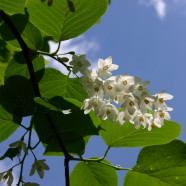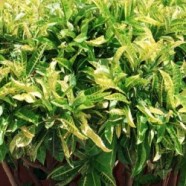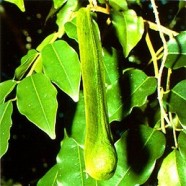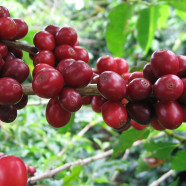Vetiver Essential Oil
Unchallenged in its ability to impart green woody notes, vetiver is a classic. Unchallenged in its ability to impart green woody notes, vetiver is a classic. It is a widely used note, particularly present in many iconic masculine perfumes. It is multi faceted and complex, while still retaining a cohesive identity. It imparts rooty and woody notes to a composition, containing a background of warm earth, soft honeyed touches and slight roasted coffee nuances. While possessing a formidable strength, it maintains a pleasantly soft and velvet texture which imparts both dry and humid effects. This vetiver is pure and direct, both powerful and diffusive while at the same time retaining a subtle elegance. It is extremely close to the actual vetiver root, but with a cleaner and more refined impact. Its texture is slightly drier and more transparent than the average offering. This leads to it being an extremely versatile note. It can be used in any work where a clear and woody character is desired. Its purity allows it to be used as either a reinforcing or as a dominant theme within a composition. Powerful, direct and elegant. It blends with citruses and floral notes with equal ease, having an exceptional affinity for rose. Its tenacity is nearly unmatched and it balances perfectly with grapefruit, lavender, jasmine and ylang-ylang. Extraction process Our Vetiver essential oil is distilled using a hydrodifussion still. The hydrodifusion still injects vapor at the top of the machine and condenses the vapor in the bottom. The vapor has pulled with it the essential oils contained within the Vetiver roots. This is later separated from the water using a Florentine flask, a traditional decanter used in perfumery to separate oil from water. Oil will separate from the water because oil and water do not mix. The distillation delicately continues for twenty-four hours in order to recover all of the essential oil and active ingredients that can be found within the Vetiver roots. Low temperatures and pressures are used in order to ensure a product that is as true to nature as possible. The Vetiver essential oil is then recovered from the Florentine flasks and left to age for six months in order for it to stabilize. This is what is then sold as a Vetiver essential oil produced through hydrodifusion. Download Technical Data Sheet Download Material Safety Data Sheet...
Read MoreStyrax Gum
The ambery balsamic gum. As a natural raw material, styrax can be used in a multiple number of applications. Even if it is an important ingredient in perfume compositions, it can also be used as an active ingredient in cosmetics and even in pharmaceutics. Topping of with a light styrene plastic note, it gives way to a soft cinnamic body with a balsamic character. Fruity and honey aromas are in the continuous gradations of its smell. It is considered under the amber family due to its leathery and animalic tones that are combined with an indulgent floral touch. Liquidambar styraciflua L, is a tree that is mainly present in the mountain region of the department of Olancho in Honduras. It is also present in important volumes in other regions of the country and even at some degree in the northern mountain ranges of El Salvador. The use of styrax gives aromatic blends a gourmand spicy tone that goes great in amber compositions. It can also be used as a fixative. It is considered as an important note in the chypre and oriental family, where it is often used. Due to its dry and smoky tonalities, it is used in bold leather compositions. You can apply styrax whenever a resinous balsamic note is called for due to its unmistakable incense like facets evocative of glue and cinnamon. It is a note that combines particularly well with woody scents. It also conglomerates well with other notes such as benzoin, vanilla, Peru balsam and cinnamon. Softens and enhances the bottom notes of floral compositions. Styrax has been historically used since before the time of the colony for medical preparations. Some of its active properties are: antiseptic, carminative, diuretic, expectorant, parasiticide, poultice, salve, sedative, stimulant, vulnerary, anti-‐inflammatory, anti-‐microbial and wound healing due to its aid in skin regeneration. It is also used in food aromas as a fixative. Styrax can similarly be engaged as a stabilizer in some pastry formulations. Extraction process Extraction from the tree start by making cuts around the stem of the trees. The length of each incision is of around 15 cm long with a depth of 3 to 4 cm. It is a diagonal cut of 45° since what the resin needs to accumulate in said cavity so that then you can collect it in a monthly fashion. What you obtain is then a mixture of resin, water, insects and vegetable residues. An artisanal purification takes place in the fields: The resin is heated on top of firewood in until the unwanted residues start to float. This is separated but the resin still has some water in it. Some of the exporters therefore continue evaporating the water or getting rid of it through other processes like centrifugation. Download Technical Data Sheet. Download Material Safety Data Sheet. Download Technical Data Sheet 2018 [ninja_form...
Read MoreCascarilla Essential Oil
The spicy woody detail This oil gives a bright and effervescent spicy top and heart note, with a warm and bracing texture. While sharing a similarity to other spice oils such as cinnamon nutmeg and anise, it distinguishes itself with delicate eucalyptus-like touches. These properties give it the rare characteristic of containing warming and cooling sensations within the same note. Able to impart character in very small amounts, it’s power is often underestimated. It gives a special diffusivity and personality to a blend, being especially able to impart a unique signature to chypre and oriental compositions. Blends well with a plethora of other spice oils, cedar and geranium type notes. While used in perfumery, it is used as a very exclusive woody and spicy heart note in composition; cascarilla also has a place in flavoring, aromatherapy and cosmetics. It is considered an expectorant and is recognized for its aid in digestive problems as well. In the aroma flavor sector, it is particularly recognized for its role as a natural flavoring agent in the tobacco industry. Extraction process The cascarilla essential oil is obtained from the bark of the Croton trees, locally known as copalchí. These are grown all over the country as windbreakers for the coffee plantations on the mountains in order to give the smaller coffee trees some shadow and protect them from harsh weather conditions. Our Cascarilla essential oil is distilled using a hydrodifussion still. The hydrodifusion still injects vapor at the top of the machine and condenses the vapor in the bottom. The vapor has pulled with it the essential oils contained within the Cascarilla bark. This is later separated from the water using a Florentine flask, a traditional decanter used in perfumery to separate oil from water. Download Technical Data Sheet Download Material Safety Data...
Read MorePeru Balsam
A sweet balsamic scent coming from El Salvador. In its natural crude state, Peru balsam is a very viscous semi-solid oleoresin of a dark brown colour. It can be used as a raw material in flavoring, cosmetics and perfumery. A powerful and balsamic amber note, Peru Balsam is diffusive with a velvet and warm texture. It possesses a comforting vanillic softness with a delicate background of spiced touches. Within a composition it imparts a depth and warmth to a variety of olfactive directions. It is tenacious, imparting fixative effects for an extended period of time. It is a highly versatile ingredient, blending well with a vast array of oils, bases and compositions. The name of this balsam is due to its historic transport route during colonial times. Everything coming from Central America had to stop first in the port of Callao in Peru. The Panama Canal did not exist at the time, so all of the ships that went out of El Salvador had to go down and around South America before going to Europe. El Salvador is the only country in the world to produce this balsam. Wherever Peru Balsam is traded around the world, then if it is of natural origin, it was produced in El Salvador. In perfumery Peru Balsam recognized for its fixative properties, it synergizes well with other suave notes such as benzoin and vanilla. It combines well in amber and leather compositions that may include labdanum or styrax. Particularly used in oriental and chypre perfumes. Being considered a soft balsamic ingredient, it is a note that can give opulence in composition. Vanilla and sour nuances give it a particularly gourmand characteristic with some animalic and sensual notes in the bottom. Its balsamic character is confirmed by a strong and sweet cinnamic presence that fades away into a subtle woody touch. Peru Balsam is also a compound of interest for its antibacterial, antifungal and anti-parasitic properties; it also has anti-bruising qualities. Other medicinal characteristics such as its use for treating rheumatism and its ability to increase blood pressure are also recognized. Some of its principal healing properties are fixed in its capacity to promote skin cell regeneration. Finally, Peru Balsam has traditionally also been used in food aromas in order to help in the flavouring and in the consistency of products, this is particularly the case for the chocolate industry. Extraction process A piece of bark measuring about 36 by 6 inches, is removed starting from the lower part of the tree trunk. The exposed area is then burnt with a torch, and then a piece of dry cloth is placed on the scorched area to absorb the oleoresin produced by the tree in response to the treatment. The oleoresin is extracted from the cloth by boiling in water for many hours and then passage through a rustic wooden press. The bark removed from the tree trunk is subject to a similar process. Download Technical Data Sheet Download Material Safety Data Sheet Download Technical Data Sheet 2018 Download Material Safety Data Sheet...
Read MoreCoffee Oil
Yummmm… Great smell and taste! Also good as an active ingredient (Who wants to avoid cellulitis?) Rich and delicate gourmand note typical of the Arabica coffee present in these regions of Central America. It is used to scent perfumes, soaps, cosmetics, aromatic, and medical products. Coffee is a world favorite in any flavor; it is mostly used in sweet compositions and should always be remembered when making something savory as well. Coffee oil is considered a safe oil being non toxic and non irritant for use in cosmetics. Hundreds of molecules can be found in the coffee oil, these are produced during the toasting process that produces a its characteristic caramel like notes. The oil contains an aromatic, a fatty acid fraction and other components such as caffeine that stimulates microcirculation of the skin and tocopherols that are natural antioxidants. The coffee oil stimulates synthesis of elastin and collagen and acts likewise as a moisturizer, this means that in slows down the aging of the skin. Fatty acids act likewise as emollients. Other therapeutic uses include fighting depression and helps in diabetes type II. Extraction process: Arabica coffee is considered the most aromatic coffee variety available in the market. The grains are chosen from strict altitude in order to ensure soft and balsamic nuances, which will develop some chocolate and caramel tones once they are toasted. The coffee bean is dried in order to obtain green coffee. This is what is then toasted and grinded in order to prepare the ingredient for its extraction to obtain the coffee oil. Download Technical Data Sheet Download Material Safety Data Sheet Download Material Safety Data Sheet...
Read More





